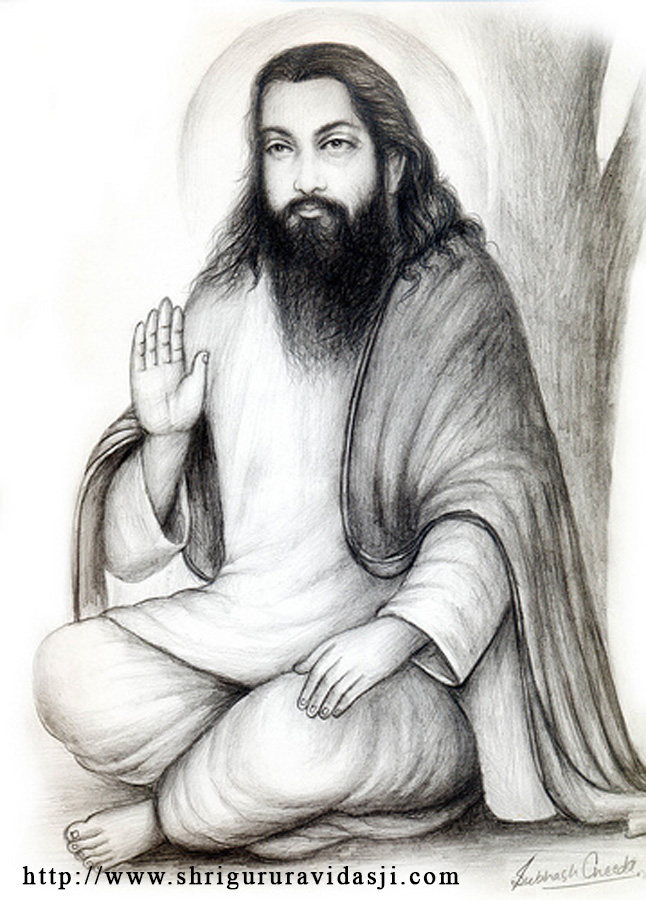Ram Puniyani
India has a very rich tradition of saint tradition. The medieval saints came from both Hindu and Islamic tradition. These saints upheld the humane values of religion and build bridges amongst different religious communities. The specific points of Hindu saints were that they came from low castes and poor communities. They ignored the ritualistic side of religion and gave more importance to social and gender equality. They were also the expression of sigh of the oppressed in this cruel world and could see that the ruling classes, the exploiters in collaboration with the clergy, are perpetuating the social and gender inequality in the name of religion so as to benefit their interests related to power and wealth.
Sant Ravidass or Raidas or Rohidas belonged to this glorious tradition, which flourished in India during medieval period. He was a North Indian saint of Bhakti tradition, a tradition which was respected by poor Muslims and Hindus both. He came from a poor cobbler family. There is some dispute about his year of birth and the time span in which he lived, still it can be said that he was there in 15th Century. He is respected highly in Uttar Pradesh, Maharashtra and many other parts of India. He is also addressed with the title Bhagat or saint as a mark of respect by his innumerable followers. A Ravidass Dharam has also been started in his name.
He is often given the honorific “Bhagat” or “Sant”. Guru Ravidass Ji is also founder of the Ravidassia Dharam. His touching devotional songs are still very popular and have also been incorporated in Sikhs Holy book Adi Granth. These were incorporated in Granth Sahib by fifth Sikh Guru Ajan Dev. He was a cobbler, Chamar. His teachings call for caste divisions and talk of gender equality while calling for higher spiritual unity. He focussed on the fact that one should be indented by one’s deed Karma in life. Unlike the Brahamanical edict, he taught that everyone has a right to read the holy books. In opposition to the Brahminic value that one should give up work and leave one’s profession
He also said that one need not to hide his caste or leave his low profession to reach God. He became a model for his fellow beings to overcome the hierarchical barriers of Brahminical Social Order and to establish Begumpura – a state without fear and sorrows. Guru Ravidass elevated the status of the labour by emphasizing on the fact that honest labour is empowering.
Artificial social differences between humans have existed in the country as of higher and lower castes. But people at large, believed that certain persons who led a pure and virtuous life and constantly engaged in the supreme effort of realization of God were above the caste and creed. These were venerated as saints and highly respected. Temples were built in the memory of holy men who belonged to so called “untouchable” castes. Tiruppani Alvar in Tamilnadu, Chokha Mela in Maharashtra, Madara Dhulayya in Karnataka were examples of such saints. Guru Ravidass, who lived near Kashi in middle of 15th century, was another such saint who has left behind a great legacy. Kashi is as holy for Hindus as it is for Buddhists, Jains and Sikhs.
Ravidass (a.k.a. Raidas) was born in the village of Sear Goverdhanpur, very close to the Holy city of Kashi or Varanasi, in the cobbler community. Only the name of mother of Ravidass is known to us; it was Kalasi.
From early childhood, Ravidass developed spiritual tendencies while attending to his family vocation of repairing shoes. To drive his attention to worldly affairs he was married early. But it did not help. His wife was a pious and God-fearing woman who turned out to be a right partner in Raids’ quest for self-realization. They spent meagre savings of their humble profession in serving holy men and in contemplation.
Ravidass composed and sang songs in praise of the Supreme. He did not worship any one deity. He believed in one and only omniscient and omnipresent God.
In the mid 20th centuries there emerged a distinct sect, the Ravidasis, for whom he is the chief Guru. Ravidasis are mainly Punjabi Chamar (Cobbler) caste and their faith, the Ravidassis religion, is a socia-religious identity. A temple was built at his birthplace in 1978. Ravidass jayanti (anniversary) is celebrated with a procession, bearing the portrait of the great ascetic in the main streets and bazaars of the city with music.
Of all the aspects of religion the role and power of the clergy has been most striking. In societies where agricultural mode of production led to the rise of feudal classes and Kingdoms the clergy played a role which was that of defender of the system of exploitation based on the feudal relations of production.

Leave a Reply